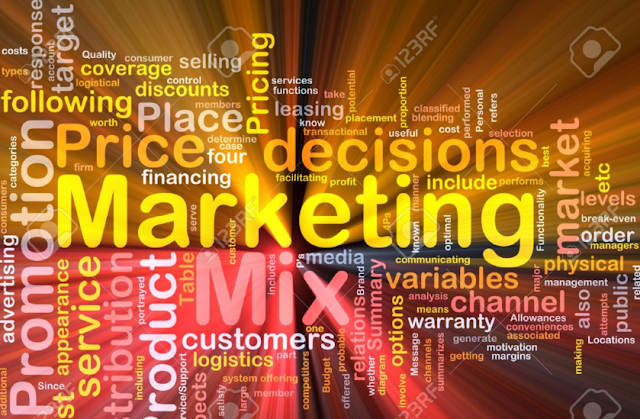ADS HERE
The marketing mix is one of the most famous marketing term. The marketing mix is tactical or operational part of the marketing plan. Also known as the marketing mix 4P and 7Ps. 4P is the price, place, product and promotion. Marketing mix as 7Ps and include the addition of process, people and physical evidence.
The concept is simple. Think about another common mix - a cake mix. All included cakes, eggs, milk, flour and sugar. However, you can change the final cake by altering the amount of contained therein mix elements. So for a sweet cake sugar!
It's the same with the marketing mix. Offer your customers be altered by varying the mix elements. So for a high level of awareness of the brand, increase the focus on the promotion and desensitize the weight given to price.
Another way to get the marketing mix of the opinion is to use the image of a painter's palette. Marketers mixing basic colors (mix elements) in varying amounts, to give the color of a particular end. Each hand-painted picture is an original in any way, as any marketing mix. Let's look at the elements of the marketing mix in detail.
 |
| Mastering The Concept of Marketing Mix, Important! |
1. Prices
Price is the amount the consumer has to be replaced in order to receive offers. Solomon et al (2009).
The company with regard to the price targets actually reduce costs through increased production and efficiency, and most importantly, have marketers to increase the perceived value of the products and services of benefit to the purchaser or consumer.
There are many ways to get a product price. Let's look at some of them see and try to understand the best policy / strategy in various Situation.
2. Place
Place includes company activities that make the target product for the consumer. Kotler and Armstrong (2010).
This place is also known as channel, distribution or intermediaries. This is the mechanism that the goods and / or services are provided by the supplier manufacturer / service for users or consumers.
3. Product
This product is a combination of goods and service providers offer to the target market. Kotler and Armstrong (2010).
For many products are only tangible, physical goods that we buy or sell. You can also use the product as an intangible that Service think.
In order to further explore the nature of the product actively, let us remember, as three different products - CORE products, product at the moment, and finally AUGMENTED product.
Product Life Cycle (PLC) on the basis of biological life cycle. For example, the seed planted (introduction); it started to (growth) to grow; shoots of leaves and root, as it becomes an adult (maturity); as long as an adult the plant begins to shrink and die (decrease).
Customer Life Cycle (CLC) has obvious similarities with the Product Life Cycle (PLC). However, CLC focuses on the creation and delivery of lifetime value to the customer in the products or services that customers need in their lives shown.
4. Promotion
Promotion includes all the activities of marketers try to inform consumers of their products and to encourage potential customers to buy this product. Solomon et al (2009).
Promotion includes all available marketers for marketing communication tools. As Neil H. Borden's marketing mix, marketing communications has its own promotional mix. While there is no absolute agreement on the specific content of the marketing communications mix, there are many actions that often included elements such as sales, advertising, sales promotion, public relations, direct marketing, online communication and personal selling.
5. Physical Evidence
(Physical evidence). Environment in which the service is provided, and where companies and customers to interact, and to facilitate all genuine components, performance or communication services. Zeithaml et al (2008)
Physical evidence is the material part of the services. Actually, there is no physical properties for the service, so that consumers tend to rely on material indications. There are many examples of physical evidence, including some of the following buildings, equipment, signs and logos, annual reports and annual reports, brochures, web sites and even your business card.
6. People
(People). All human actors who play a role in service delivery and thus affect the perception of the buyer; namely the company, customers and other customer staff in a service environment. Zeithaml et al (2008).
People are the most important elements of any service or experience. Services are usually produced and consumed at the same time, and aspects of the customer experience are altered to consume the individual needs of people.
7. Process
Process). Actually, processes, mechanisms and flow of activities where the service is provided - these services and the operating system. Zeithaml et al (2008).
There are a number of processes in the perception of the concept of business and marketing literature. Some see the process as a means to achieve a result, for example - in order to achieve a 30% market share of the company, the implementation of marketing planning process. But in reality, it's more about the customer interface between business and consumers, and how they deal with each other in a series of steps in the process, the whole process.